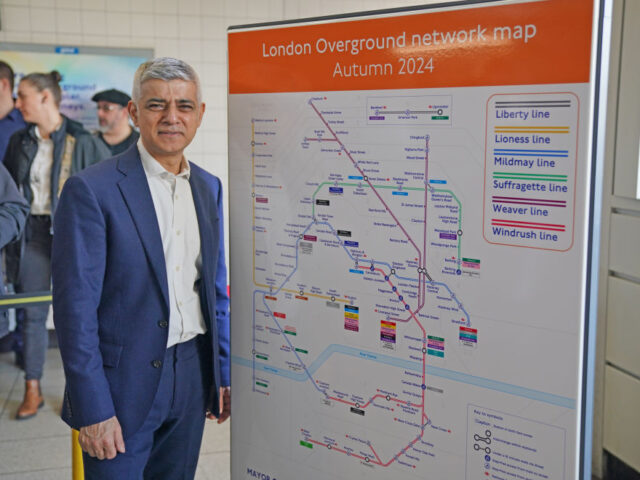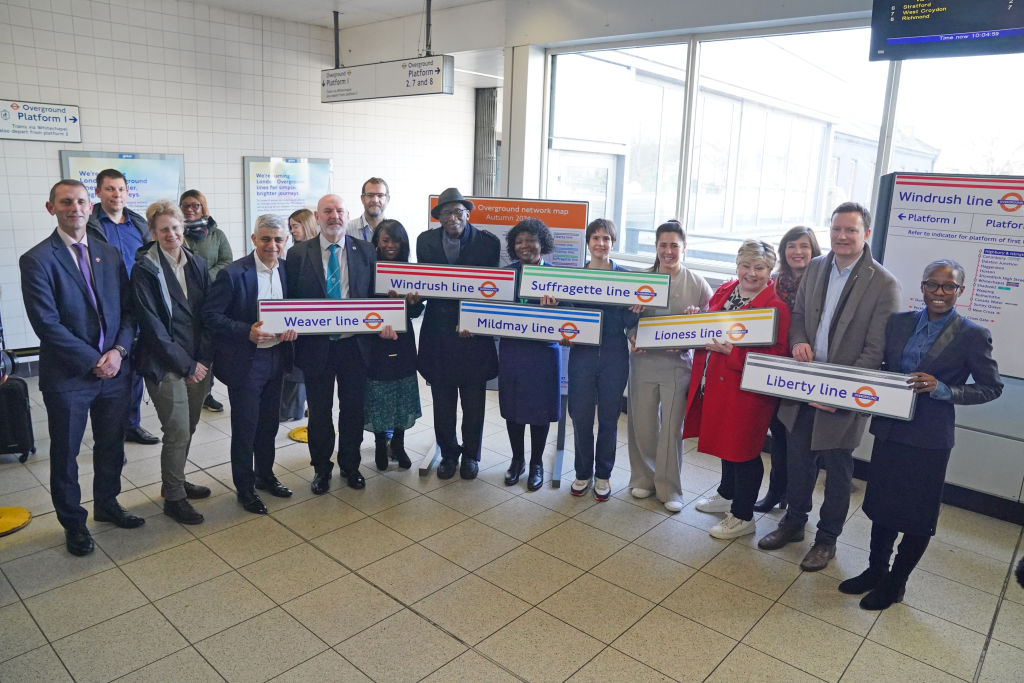
While previous transit lines in London have been typically named after a defining feature or in honour of the Monarch, under Mayor Khan a rebranding sees metro lines named for political ideas, social issues, and migration.
Londoners can now catch an Overground train on the Mildmay Line, remembering a hospital that was heavily involved in the HIV/Aids crisis, before changing onto the Weaver Line, named to invoke “areas of London known for their textile trade, and shaped by migrant communities & individuals”.
The BBC notes the names for the lines are intended to mark London’s “history and cultural diversity”. Mayor Sadiq Khan announced the rebranding on Thursday morning, naming other lines like the Windrush after the 1948 arrival of a former troopship in the United Kingdom loaded with migrants from the West Indes, marking the beginning of an age of migration to the country.
The Suffragette and Lioness lines are named for women’s interests, being callbacks to the campaign for women’s emancipation in the late 19th and early 20th century, and the English women’s football team, respectively.
The Windrush line
— Sadiq Khan (@SadiqKhan) February 15, 2024
📍 Highbury & Islington to Clapham Junction/New Cross/Crystal Palace/West Croydon
Map colour: Red
The Windrush generation continues to shape our city today. This line honours them and runs through areas with strong ties to Caribbean communities. pic.twitter.com/YEOx27Pgzg

Train approaching London Overground platform inside Wapping station where light is seen illuminating old steelwork from the original tunnel on 10th February 2024 in London, United Kingdom. The station occupies the north end of the former Thames foot tunnel built by Marc Isambard Brunel, and was subsequently adapted for a railway link. (photo by Mike Kemp/In Pictures via Getty Images)

Mayor of London Sadiq Khan (third left) with representatives during a visit to Highbury and Islington underground station, north London, to announce that London Overground services will be split into separate lines, which will be given individual names and colours to make the network easier to navigate. The six lines will be named Lioness, Mildmay, Windrush, Weaver, Suffragette and Liberty. Picture date: Thursday February 15, 2024. (Photo by Jonathan Brady/PA Images via Getty Images)
While it could be argued the lines generally reflected causes and historical events that may appeal more to those of the political left, at least one line has been celebrated by a Conservative Member of Parliament. The Liberty Line, which runs between Romford and Upminster in north-east London, is in reference to the ancient Royal Liberty granted to Havering in 1465.
The granting of a liberty then recognised that an area had special rights and was free from interference from the King, including freedom of taxation. Unfortunately for the people of Havering, such rights have long gone.
Local MP Andrew Rosindell noted the name recognised “the historic independence of the people of Havering and our status as a Royal Liberty. “Liberty” is also the motto of the London Borough of Havering!”.
London’s Overground is the consolidated remains of the largely Victorian-era heavy rail lines built to serve commuters across the city. Distinct from the Underground ‘tube’ trains but integrated for fare and interchange purposes under the umbrella of the Transport for London body, until now the Overground lines didn’t have names nor corporate colours, other than overall orange branding.
The Romford - Emerson Park - Upminster ‘push ‘n pull’ train line will now have an official name - “Liberty Line” celebrating the historic independence of the people of Havering and our status as a Royal Liberty. “Liberty” is also the motto of the London Borough of Havering! 🇬🇧 pic.twitter.com/uZYnBiZfkZ
— Andrew Rosindell MP 🇬🇧🏴 (@AndrewRosindell) February 15, 2024
